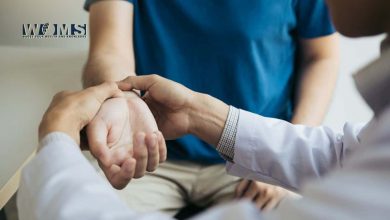Medical Emergency Decision Making Guide: A Crucial Skill for Everyone

Medical emergencies can happen at any moment, and in many cases, having a clear understanding of how to make informed decisions can save lives. Whether it’s a heart attack, stroke, an accident, or a sudden illness, the actions taken in the first few minutes are critical. It’s important to have a solid understanding of how to assess the situation and make decisions that can mitigate harm and improve outcomes. Below is a comprehensive guide to medical emergency decision-making, emphasizing clear thinking, safety, and prompt action.
1. Stay Calm and Assess the Situation
The first step in handling any medical emergency is to remain calm. Panic can cloud judgment and lead to mistakes that might worsen the situation. Take a deep breath, and focus on the details. Quickly assess the environment to ensure safety for both yourself and the patient. Is there any immediate danger (e.g., fire, traffic, hazardous chemicals)? If so, move the victim to safety before proceeding with medical care.
Assess the patient’s condition. Are they breathing? Are they responsive? Do they have any visible injuries or signs of distress, such as heavy bleeding, chest pain, or difficulty breathing? Understanding the severity of the situation is crucial. You’ll need to determine whether professional medical help is required immediately or if first aid can be administered while waiting for assistance.
2. Determine the Severity of the Situation
Once you’ve assessed the scene, it’s important to determine whether the situation is life-threatening. Conditions such as severe bleeding, difficulty breathing, chest pain, severe burns, or head injuries could be signs of a medical emergency that requires immediate attention. The following guidelines can help you determine the urgency of the situation:
- Life-threatening conditions: Unconsciousness, lack of breathing or abnormal breathing, severe bleeding, chest pain, signs of stroke (numbness or weakness on one side of the body), or severe allergic reactions (anaphylaxis).
- Non-life-threatening conditions: Minor cuts, bruises, sprains, or mild illnesses like a headache or nausea that do not appear to have an immediate risk to life.
If any life-threatening condition is identified, you should call emergency services immediately and administer basic first aid if you are trained to do so.
3. Call Emergency Services
In any situation where you are uncertain or the condition appears severe, call emergency services immediately. Provide clear and concise information, such as your location, the nature of the emergency, and the patient’s condition. Dispatchers are trained to guide you through the next steps, so following their instructions is critical. Even if you are uncertain about the severity of the situation, erring on the side of caution by seeking professional help is usually the best decision.
4. Basic First Aid Actions
While waiting for medical professionals to arrive, administering first aid could make all the difference. Here are some basic first aid actions for common emergencies:
- CPR (Cardiopulmonary Resuscitation): If the person is unconscious and not breathing, initiate CPR. It involves chest compressions and rescue breaths. The American Heart Association recommends performing hands-only CPR if you are not trained.
- Bleeding: Apply direct pressure to any wound with a clean cloth or bandage. If the bleeding is severe, elevate the injured limb and maintain pressure until help arrives.
- Choking: For someone who is choking and unable to breathe, perform the Heimlich maneuver (abdominal thrusts) to expel the obstruction.
- Seizures: If a person is having a seizure, move nearby objects out of the way to prevent injury. Do not attempt to restrain them. Time the seizure and make sure they are comfortable once the seizure stops.
5. Monitor and Comfort the Patient
While you wait for medical professionals to arrive, keep monitoring the person’s condition. Are they still breathing? Are they responsive? Make them as comfortable as possible, and reassure them if they are conscious. Anxiety can worsen many medical conditions, so a calm, reassuring presence is beneficial.
If the person is conscious, ask them questions about their symptoms and any medical history they might have. Knowing if they have a heart condition, diabetes, or allergies can help guide the care they receive. If they lose consciousness or their condition worsens, be ready to provide first aid and share any information you have with emergency responders.
6. Stay Informed and Prepared
Preparation is essential. Having basic first aid training and keeping a well-stocked first aid kit on hand can help you feel confident in handling medical emergencies. Many organizations, such as the American Red Cross and local hospitals, offer courses in first aid and CPR, which can provide you with the skills necessary to respond effectively in emergencies.
Additionally, familiarizing yourself with basic signs and symptoms of common medical emergencies, like strokes, heart attacks, and allergic reactions, will improve your ability to assess situations accurately and make informed decisions quickly.
Conclusion
Medical emergencies are unpredictable, and having a clear plan for decision-making in such situations is invaluable. By staying calm, assessing the situation, knowing when to call for help, administering first aid, and monitoring the patient’s condition, you can improve the outcome in an emergency. The most important thing to remember is that your actions—whether you’re providing basic first aid, calling for help, or simply staying calm—can have a significant impact on the patient’s chances of recovery. It’s a skill everyone should develop to help save lives and handle emergencies with confidence and care.
Infographic provided by INTERCEPTOR Legal Support Services




